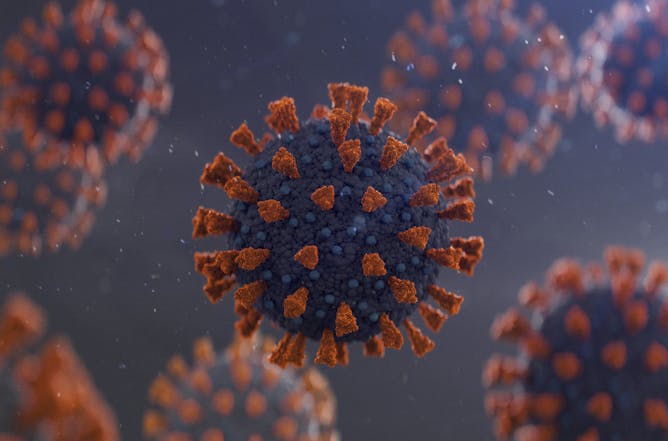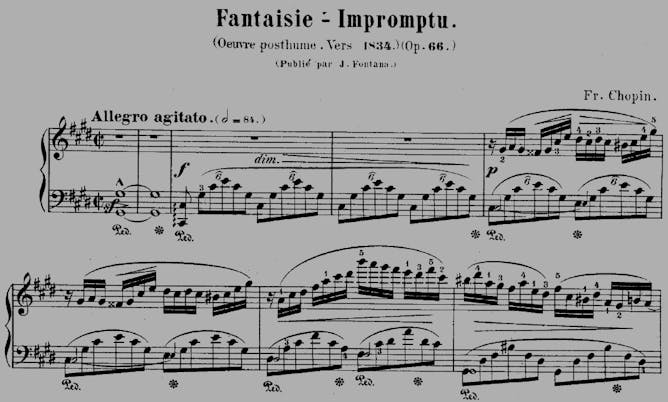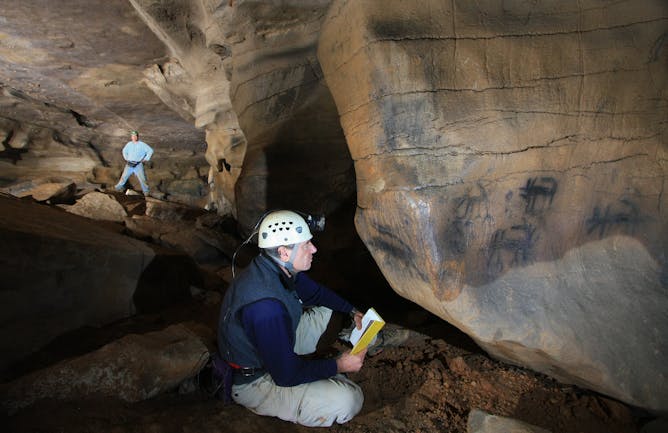|
One of the most fascinating – and important – areas of research regarding COVID-19 is the disease’s effect on the brain. Texas A&M cognitive neuroscientist Jessica Bernard helps decipher a recent study that found people who had COVID-19 infections, including milder cases, showed a decrease in gray matter, which processes information in the brain. Bernard unpacks the research, which has not yet been peer-reviewed but is large-scale, and places the work in the context of her own research on aging.
In case you need more evidence of how broadly artificial intelligence is influencing society, look no farther than some of the stories we published this past week. In one, a human rights specialist with a focus on AI weaponization argues that the first autonomous weapon to kill a person, which may have occurred for the first time last year, marks a dangerous turning point for humanity.
On a far lighter note is a delightful story from a computer scientist who describes his collaboration with musicologists to complete Beethoven’s 10th Symphony using only the composer’s earliest sketches. Also on the theme of music, two computational biologists write about their work making Chopin-inspired music based on the structure of proteins. Both stories have great sound clips.
In other research and science news this week:
Please reply to this email if there’s a topic you’d like our team of science editors to investigate.
|

The new findings, although preliminary, are raising concerns about the potential long-term effects of COVID-19.
Yuichiro Chino via Getty Images
Jessica Bernard, Texas A&M University
Reduced brain volume in people who have experienced COVID-19 resembles brain changes typically seen in older adults. The implications of these findings are not yet clear.
|

Training an algorithm to play proteins like Chopin can produce more melodious songs.
Frederic Chopin/Wikimedia Commons
Peng Zhang, The Rockefeller University; Yuzong Chen, National University of Singapore
Many features of proteins are analogous to music. Mapping these features together creates new musical compositions that help researchers learn about proteins.
|

The author examining pictographs in 60th Unnamed Cave, Tennessee.
Alan Cressler
Jan Simek, University of Tennessee
For thousands of years, Native Americans left their artistic mark deep within caves in the American Southeast. It wasn’t until 1980 that these ancient visual expressions were known to archaeologists.
|
Other good finds
|
-
James Dawes, Macalester College
Sci-fi nightmares of a robot apocalypse aside, autonomous weapons are a very real threat to humanity. An expert on the weapons explains how the emerging arms race could be humanity’s last.
-
Ahmed Elgammal, Rutgers University
When Beethoven died, all he left behind were some sketches for his 10th Symphony. Now, thanks to the help of artificial intelligence, the composer’s vision is coming to life.
-
David Bray, Florida International University
About 60% of Mexico’s forests are managed by local communities. A scholar who has studied the forests for 30 years explains how this system protects the forests and the people who oversee them.
-
Tianshu Li, University of Virginia
Bats roost under bridges and culverts across North America, so highway departments have to check for them before repairing bridges. A new AI tool makes those inspections faster and more accurate.
-
Steve Casner, NASA
Tesla crashes and the investigations that follow generate a lot of headlines, but the dangers of automotive automation are industrywide. The common denominator is the human behind the wheel.
-
Maureen Ferran, Rochester Institute of Technology
Your body produces antibodies after an infection or vaccine, but these slowly decline over time. New Johnson & Johnson data sheds light on the duration of protection and the need for booster shots.
-
Mojtaba Sadegh, Boise State University; Ali Mirchi, Oklahoma State University; Amir AghaKouchak, University of California, Irvine; Kaveh Madani, Yale University
Cities and farmers in the Southwest are resorting to unsustainable strategies to pull in more water. Iran has tried many of these strategies and shows how they can go wrong.
|
|